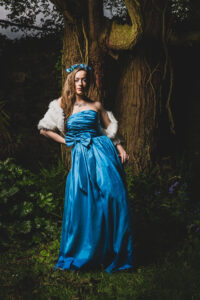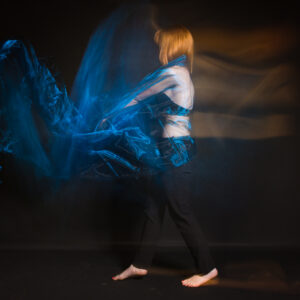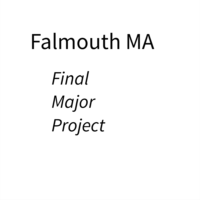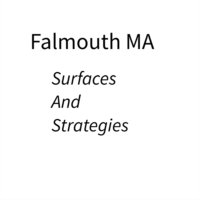The reflection post considers the following topics:
-
Activity begin at the beginning
-
Marketing Plan
-
Harwich Pier - Project
-
Harwich to Maldon Passage - Project
-
London Photo Show
Week 4 has been a busy week with course assignments and project related activities that have some how naturally intertwined with each other.
The first activity was to look back at our photographic DNA the essential building blocks of practice. Though Crick and Watson may not have discovered the building blocks of DNA that was done by other scientist prior to them they did decipher the construction of the DNA in the form of a double helix (Nature.com, 2017).My own photographic practice can not be described as a linear progression from my early images to the images I create in practice today. The reality is more complex though one of my early black and white images is of a yacht moored near Maldon and this week I was on a sailing badge on passage back to Maldon there are other strands of work that interlock with this work.
There is a stream of work that is informed by abstract images and concepts such as the exploding balloon which was driven my a desire to explore the technical limits of my photographic equipment so that methods and devices do not constrain practice (discussed in the Surfaces and Strategies module)


There is another strand of my practice related to fashion and lifestyle photography. I am especially interested in commissions that take fashion and put it back into the real world which creates interesting challenges for the photographer because you are not 100% in control of all of the factors in the same way you are in the studio.


Then merging the two concepts together to create a body of work around performance art.
For me each of these different threads link together and provide me with the platform where I am 100% comfortable with the different photographic tools and I can focus on envisioning the story knowing that work from a previous body or work and provide me with the platform for the most recent work.
The second activity of the week was related to the development of a marketing plan, marketing is some that I really need to develop to transform my practice from a hobby into a sustainable business. I have had accounts on social media for a long time yet I have used them as a consumer of information rather than a producer, so I have committed being more active on social media. When taking this decision I wanted to make sure it was with purpose rather than just posting content for the sake of posting content. I decided to post my material under 3 broad themes the first two are about allow a social media to gain insight into the photographer behind the work. I decided to use two hashtags to group these posts #commuterlife (my journey to and from work) and #essexlife for posts related to my life outside of the work environment. The third hashtags is related to projects and for my current project I am using the hashtag #tilbury2harwich. The number of followers on social media increased in the later part of the week when I increased the number of photographic and art magazines that I am following. I managed to double my followers in 1 week to 68.
For my work in progress I had two different shoots scheduled for the week. The first was to shoot the 3rd of the 4 pleasure piers along the Essex coast and second to passage on a Thames sailing barge to travel along part of the Essex Coast.
Harwich Pier is also known as halfpenny pier because that was the cost of the ferry between Harwich and Felixstowe. The pier is the shortest of the 4 piers however I was able to find sufficient opportunity to photograph the pier from the same angles as Southend and Clacton that I had recorded at an earlier date. The pier is interesting because it does not stretch out into the sea in the sea in the same was Clacton or Southend do. It runs for half of its length parallel to the shoreline. I found this interesting to consider in relation to the other piers that I view as providing longer transition into the fluid ever changing world of the water. If you consider that land represents the here and now and water represents the future or spirit world a pier can be seen as a device that allows us to extend the present into the future. Harwich pier was interesting in because the pier hosts a number of benches with a plaque that records the passing of a family member acting a trace of the person that has gone before and possible spent time on the pier. The benches also provide the us with a place to sit and reflect.
The other purpose for travelling to Harwich was to get passage on the Thames Sailing barge Thistle on its passage back to Maldon which would allow me to consider out relationship with the coast from the sea. I could not use the trip exclusively for taking photographs as passage was partly conditional on me helping crew the boat on its journey to its home port. The intention was to sail for as much of the journey as possible as possible and that meant our course would be governed by the elements of wind and tide with the storm Brian due to hit the Essex coast on Monday evening. If we consider the pier as a device to extend the here and now into the future or spirit world the barges course would be most be dictated by the water and world of the future. If we did not reach Maldon on the rising tide it would be very difficult to reach Maldon Quay and be moored up before the storm arrived. This made me consider the influence we really have on the world around us and I decided to record images during the passage that showed the passing of the land but also the devices sailors use to harness the elements and navigate safely back to land.
The wind and tide was kind to us and we managed to dock on the morning tide on Monday as Tuesday was the day I needed to be in London to deliver my artwork for the London Photo Show that was due to open on Wednesday.
Tuesday morning the artwork was delivered and I got the first chance to see the Strand Gallery from the inside. The gallery was split across two levels and my work was due to be hung in the basement area. The gallery has plenty of wall space but parts of it are maybe not optimal for exhibiting work but it does provide a neutral base for exhibiting work. Being exhibited as part of a bigger show meant that I had no control over the work that would be exhibited next to mine though I had produced a hanging guide for the team to use when hanging my work.
Wednesday evening was preview evening the great thing about being at a group show is there were plenty of people present to view the work and I managed to speak to a number of different people about the story behind the work and artistic decisions I had taken. I produced promotional cards so that for people to take with them when they left the gallery. Though the limited space downstairs meant it got very hot so I did not stay with my work all evening potentially missing out on the chance to engage with more people and promote myself and my work in person. It was nice to meet Paul Clements who got to see my work in physical form rather than the digital form which is how as flexible students most of our work is consumed. I really like the gallery construct as a way of exhibiting work as showing the work in a physical form for me feels more resolved that a digital product.
As a footnote in recent years I had been moving away from purchasing books in physical form to more of a digital presentation though having visited a number of exhibitions and exhibiting my own work there is something more permanent about photography in physical form maybe there is also a sense of nostalgia for analogue photography creeping to my practice though it is difficult to beat the flexibility of digital in the create part of the workflow.
References
- Nature.com. (2017). Discovery of DNA Double Helix: Watson and Crick | Learn Science at Scitable. [online] Available at: https://www.nature.com/scitable/topicpage/discovery-of-dna-structure-and-function-watson-397 [Accessed 4 Nov. 2017].



